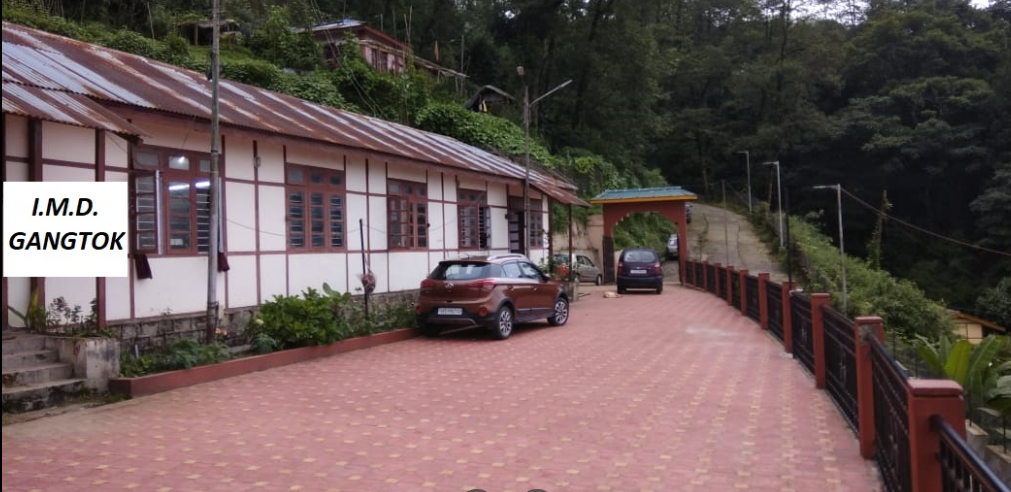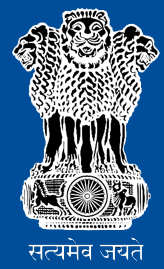About Us
IMD Mandate :
To take meteorological observations and to provide current and forecast meteorological information for optimum operation of weather-sensitive activities like agriculture, irrigation, shipping, aviation, offshore oil explorations, etc.
To warn against severe weather phenomena like tropical cyclones, norwesters, duststorms, heavy rains and snow, cold and heat waves, etc., which cause destruction of life and property.
To provide meteorological statistics required for agriculture, water resource management, industries, oil exploration and other nation-building activities.
To conduct and promote research in meteorology and allied disciplines.
To detect and locate earthquakes and to evaluate seismicity in different parts of the country for development projects.
History :
This Unit of Meteorological Centre, Gangtok was established with a view to provide scientific and Meteorological services for the state of Sikkim and to cater to the need of various State/Central govt. departments, undertakings, public sector & private sector enterprises and the public in general.
Meteorological Observatory Gangtok was established on 7th May 1955 in Raj Bhawan Area, Baluakhani, by the India Meteorological Department, New Delhi. An Agro-meteorological Advisory Services (AAS) Unit was subsequently established in 1978 in part of Ladakhi Mansion Baluwakhani to provide Agro-meteorological services to the farmers of Sikkim. Also a Meteorological Observatory was established in August 1978 in ICAR Complex Tadong for providing weather data to Agricultural Scientists engaged in active agricultural research. Further, four Part-Time Observatories, one in each district of Sikkim were established during 1979-80 under the Agro-meteorological Scheme and under the supervision of the State Department of Agriculture viz. Mangan (North Sikkim), Namchi (South District: Now shifted to Namthang), Gyalshing (West District) and Mazitar (East District).

Also the following Rain guage Stations under Hydro-meteorological Scheme of Regional Meteorological Centre Kolkata & North Bengal Flood Control Commission of Flood Meteorological Office Jalpaiguri have been established in Sikkim under the active supervision of various State/Central govt. organizations: Lachung, Lachen, Chungthang, Ship-ger, Chhaten, Sankalan, Dikchu, Kabi & Singhik (North District); Khanitar & Damthang (South District); Yoksum & Dentam (West District); and Rongli (East District).
In order to provide better Meteorological Services to the State, the AAS Unit Gangtok with a network of 2 Departmental Observatories, 4 Part-Time Observatories and about 15 Rainguage Stations has been upgraded to Meteorological Center Gangtok from 15.7.2003 and a Forecasting unit established in March 2004 aided by Satellite Data Utilization Centre (SDUC) equipped with Meteorological Data Dissemination (MDD) System installed in December 1999.
Due to ongoing modernization of Meteorological equipments and due to expansion of observational and communication networks in Sikkim, 1 Automatic Weather Station (AWS) has been installed at Meteorological Observatory (M.O.) Tadong in the ICAR Farm in February 2007 and 3 Agro-AWS and 10 Automatic Rainguage (ARG) Stations are being installed shortly.
Furthermore, the M.C. Gangtok has been equipped with Digital MDD for the SDUC Station and latest communication networks like High Speed Data Terminal (HSDT) and Very Small Aperture Terminal (VSAT) facilities. Also Interactive Voice Response System (IVRS) with a toll free number wherein Local Weather Forecast of Gangtok may be readily accessed by the public and end-users.
Under the National Agricultural Policy, the AAS Unit has been upgraded to State Agro-Meteorological Center (S.A.M.C.) Gangtok from July 2007 under the control of National Agro-meteorological Advisory Services Centre (N.A.A.S.C.) IMD Pune with a view to provide better Agro-Meteorological Advisory Services to the farmers of Sikkim especially progressive farmers and other end-user at District and Village levels.
Forecasting Unit :
Local weather forecast of Gangtok and neighborhood is issued once daily at 1300 hrs IST and passed on to AIR Gangtok, Doordarshan Gangtok and Regional Meteorological Center, Kolkata. Forecast is also available in the IVRS readily accessible to the public and other end users on a toll free number.
AAS Unit :
Bi-weekly Composite Agromet Advisory Bulletins (AAB) for Sikkim (in English & Nepali version) are issued on Tuesdays and Fridays in collaboration with Department of Food Security & Agricultural Development, Department of Horticulture & Cash Crop Development Govt. of Sikkim, Gangtok and Spices Board Govt. of India Gangtok, which is broadcast by AIR Gangtok in the evening in the local Nepali programme for the benefit of end users, especially progressive farmers of Sikkim and are also telecast by Doordarshan Kendra Gangtok. The bulletins are mailed to SAMC Kolkata and NAASC Pune for onward preparation of National Composite Agromet Advisory Bulletin for the country.
Inspectorate Unit :
Looks after the scrutiny of weather data of four Part-Time Observatories viz: Mazitar (East Sikkim), Mangan (North Sikkim), Namthang (South Sikkim) and Gyalshing (West Sikkim) and also that of M.O. Tadong. It undertakes annual inspection/installation tours of the above part time observatories on regular basis. It also supplies Meteorological data of Sikkim to State/Central Govt. Departments & undertakings, public sector and private sector enterprises and to other end users.
Technical Unit :
It undertakes receipt & transmission of various Meteorological data through HSDT and VSAT and also downloads Satellite Cloud Pictures and other Weather Charts from Digital MDD system from the SDUC station for onward analysis for issue of Daily Local Weather Forecast.
M.O. Gangtok :
Basic Information: Meteorological Data at 03,06,09 and 12 UTC and also upper air data through pilot balloon observation manually at 01/ 02 and 11/12 UTC daily. Thermometers namely Maximum, Minimum, Dry Bulb & Wet Bulb thermometers are kept inside a Singles Stevenson Screen (Dry Bulb gives the air temperature at an instant. Relative Humidity & Dew Point Temperature of air is determined from the Hygrometric Table corresponding to the Dry Bulb & Wet Bulb temperatures at the instant). The Self-Recording Instruments namely Thermograph to record air temperature & Hygrograph to record Relative Humidity of air on daily basis are kept in Double Stevenson Screen. Ordinary Rainguage to record daily total rainfall and the Self-Recoding Rainguage are installed inside the observatory, besides Open Pan Evaporimeter to record the evaporation of air. Charts for all the Self-Recording Instruments are changed at 0820 hrs IST daily. The Wind Instruments namely Wind Vane to record the direction of air, Anemometer to record the wind speed and Sunshine Recorder are installed on the Pilot Balloon Observation Tower. From this tower, Upper Air Circulation over Gangtok is observed manually from instrument known as Optical Theodolite. Upper Data are analyzed digitally through Hand Held Data Logger. Both the Kew Pattern (K.P.) Barometer and Self-Recording Barograph installed in the Observatory Office records the Atmospheric Pressure at any instant.
M.O. Tadong :
Basic Information: The Observatory records Synoptic or Surface Meteorological Data at 03,06 and 12 UTC from the Meteorological Instruments as those installed at M.O. Gangtok and records soil temperatures at depths of 5, 20, 50 and 100 cm respectively at 0700 & 1400 Local Mean Time (LMT). It also records the daily Radiation Data of Incoming Solar Radiation through the Pyranometer and analyzes the data through digitally through Data Logger.
Seismological Observatory Tadong
Basic Information: It regularly records tremors /earthquakes on charts mounted on instruments called Seismograph on regular basis; and downloads and washes the seismograph charts daily at 0800 hrs IST. Tremors of light/moderate intensity are reported daily to M.C. Gangtok and DGM (Seismology) New Delhi for record. Tremors/Earthquakes actually felt at the Station are immediately reported to suitable State Authorities at Gangtok and at the district levels, Disaster Management Cell of Civil Defense Department Gangtok, M.C. Gangtok and D.G.M. (Seismology) New Delhi and report of damage of property and loss of human life, if any, are collected from the State authorities.

